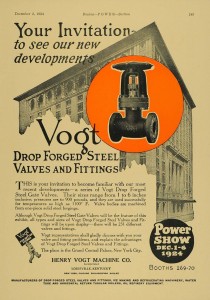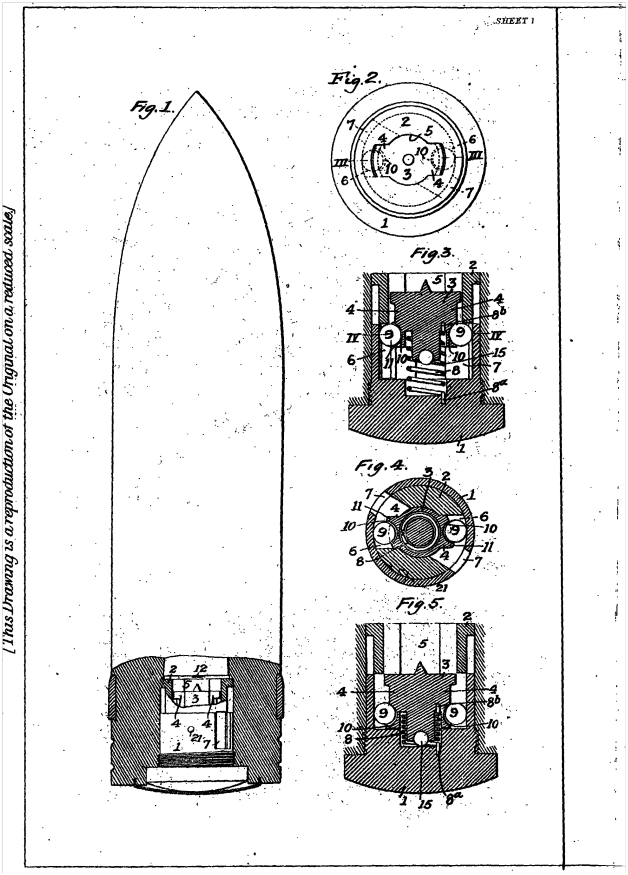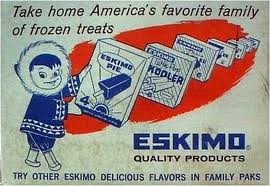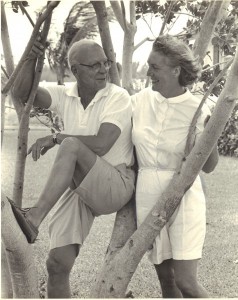Last year before the WIA annual event I posted “Covington, Kentucky, 1913: A Family Mystery” (which can be read here). This extensive post brings my research into the history of my father and prolific American inventor, C. W. Vogt (1891-1973), up to date, with archival photos and documents.
Vogt Family Background
It is worthwhile to get a broader picture of his background than I have previously provided. The military invention we will look at is the result of his being exposed to the intricacy of timepieces and high level mechanical engineering.

Adam Vogt
His father, Adam Vogt , was an horologist (clockmaker and repairer) and jeweler. It was said of my father Clarence that after Christmas there wouldn’t be a toy not taken apart and analyzed, as he did at age five with his first watch.

Adam was also involved in real estate and manufacturing. He and his brother Henry Vogt were Notable Men in Louisville. Their joint company was Vogt Brothers Manufacturing.

Fire hydrants produced there still dot our landscape.

Vogt Bros. Hydrant. Photo courtesy of Mike Martin.
A young C. W. invented for them a coal stoker and coal crusher, both of which failed.
Henry Vogt

1901 Sir Knight Henry Vogt, Knights templar
started his own dynastic company, the Henry Vogt Machine Company.

The Henry Vogt Machine Company.

It became a leader in valves and refrigeration.

For a cool look at a salesman’s travel book for them click here.
C. W. Vogt

C. W. Vogt youthful portrait
attended Cornell University for two years, absorbed what education he felt they could offer him, and then went to work for Vogt Brothers and the Henry Vogt Machine Company. He developed a strong dislike for his uncle. Upon asking for a raise he was told that until he could do every job in the plant better and faster than everyone on the shop floor, no promotion was possible. Talk about Old School…
Delay detonation mechanism.
It was likely that during this time he began work on his military invention. The trip to England in 1914, mentioned in the previous post, could have well been related to its early development. The first reference I’ve found, below, reveals the process to have taken years:
From “Industrial Refrigeration” Volumes 54-55 February 1918
“Clarence Vogt, of Louisville, Kentucky, in recognition of his work in perfecting a time explosive on which government authorities have been working five years, has been made a captain in the United States regular army. Captain Vogt’s invention has an automatic delayed firing mechanism for high explosive shells and is covered by forty claims. Up to the time of enlisting in the Ordinance Department last August practically all of his time was devoted to the refrigerating line. By reason of his being a member of the American Society of Engineers, Capt. Vogt was qualified for appointment as first lieutenant without having to study at a training camp. He is the son of Mr. Adam Vogt, president of the Vogt Brothers Mfg. Co., of Louisville, and was manager of that company at the time he joined the colors. Captain Vogt is twenty- six years of age.”

Capt. C. W. Vogt.
Here is a short section of text followed by drawings of the device. If anybody with solid engineering savvy wants to read the complete text I’ll be happy to furnish them the whole patent. I am as baffled now reading through the pages as I was in 1965 when he showed them to me in England!





Clarence Vogt brings ice cream machinery into the 20th century.
“The crank, industrial crank, mold, disher and shallow freezer all came into use by the end of the 19th century, but one more innovation bears mentioning. In 1926, Louisville, Kentucky, inventor Clarence Vogt designed and built the first continuous process freezer, bringing the mass production of ice cream products full circle.” eHow.com.
I grew up hearing about his role as inventor of the process for creating continuous frozen ice cream and other food products but until recently there was no documentation. This recently uncovered clipping from the Courier Journal is the first public announcement of his revolutionary invention which would become the “Votator”.
Louisville Courier Journal March 5, 1926.
“INSTANT FREEZER TO REVOLUTIONIZE ICE CREAM INDUSTRY, LOUISVILLIAN SAYS.
” Something new has been accomplished in Louisville in freezing liquids, which will revolutionize the ice cream industry and provide a new business for the city, according to C. W. Vogt, inventor and refrigeration expert, who heads a company recently formed for the manufacture of his machines. Mr. Vogt made the announcement Sunday.
The new process can not only be used in ice cream manufacture, but is also applicable to other lines, including the freezing of eggs, proper chilling of lard and other materials, he said.
The apparatus, according to its inventor, saves 80 percent of the space now being devoted to ice cream machines, saves 50 percent of the labor involved, and in addition is instant and continuous. Through the old system of ice cream manufacture Mr. Vogt said twenty-four or more hours were required to prepare cream for the market after it was frozen.
Makes any amount
Mr. Vogt’s machines will make from a small quantity to 600 gallons an hour and the cream is ready for consumption as soon as it runs from the spigot of the new machine. Fifteen patents in all have been applied for on the principles evolved by Mr. Vogt. The smaller machines now being manufactured by the Standard Sanitary Manufacturing Company and the Louisville Electric And Manufacturing Company, suitable for hotel use, will supply instant cream for large banquets and the hotel trade as well.
A mixture of the cream is inserted in the machine, it passes through a rather small tube which is connected to the ordinary refrigeration system and comes out of the spigot at the turn of a switch. The mixture is under pressure and the air is supplied by a small piston. The mixture is under a continuous pressure of about fifty pounds.
As it passes through the tube, for a distance of two feet, it is agitated by a special contrivance which touches no metal part of the machine and thus does not produce frictional heat. At the end of the tube near the delivery spigot, the tube widens and the agitator moves faster, due to the greater diameter of the paddles. The brine is controlled automatically to insure proper temperature.
Manufactures See It
The contrivance produces more cream from a given mixture than any yet evolved, Mr. Vogt said, because it saves waste. Not only does it save waste, but one kind of mixture can be put in as soon as the other has run out. Thus, he said, it is possible to run through two or more flavors in succession without halting the operation of the machine. It fills directly to cups, mold, or any sort of container.
Due to the rapidity of freezing and the continuous agitation under pressure, the flavor and homogeniety of the mixture is retained, he said. The machine is the forerunner of others which will be developed later, he said.
Ice cream manufacturers from the Middle West and the South have been drawn to Louisville by the demonstrations given here during the last two or three months. Several large concerns have become interested in the process and indicate that they will freeze eggs and other products by the machines as soon as they can be produced, Mr. Vogt said.
The first machine will be delivered this week to a Louisville caterer. This machine takes no more space than an ordinary small table and will be able to produce the product continuously. Mr. Vogt said any of the machines can be operated by low-powered motors and are so simple that they can be installed anywhere there is a refrigerating system and an electric light circuit.
Chemical Tests Made.
Tests are being made in laboratories to determine whether the new machine has improved the product by adding new values to the frozen foods, Mr. Vogt said. A company has been formed by Louisville capital to exploit the machine. Mr. Vogt is president and general manager; David C. Liggett, vice-president and sales manager; C. B. Kniskern, secretary and treasurer and G. O. Wymond, sales engineer. The board of directors consist of Richard Bean, Lee Miles, A. W. Lissauer, Louis Hollenbach, Walter H. Girdler, Arthur H. Almstead, and Mr. Vogt. No stock is being sold by the company, which is a closed corporation, it was announced.
Other uses later will be made of the principles discovered here, it was said. After careful surveys and consultations, Mr. Vogt said, it developed that no previous use had been made of the principle involved in the process.”
Board member Walter H. Girdler was himself the founder of a dynastic corporation bearing his family name. In following years the Girdler Corporation developed the Votator. It brought them fame and success in the food industry.
C. W‘s comments about his invention, that “other uses later will be made of the principles discovered here” and that it would “provide a new business for the city,” were clearly born out in this advertisement from 1947.

My father went to work for the Girdlers. Here is a fine portrait of him as vice-president of the Votator division.

He struck off on his own within a few years. More ice cream inventions followed. Working with the Reynolds Aluminum Company he combined his expertise in refrigeration and packaging in the mass production of the Eskimo Pie.

Later he developed the MelORols.

Mello- Roll
C. W. Vogt enjoyed a long, successful life as a development engineer and inventor. His mind brimmed with ideas. He brought an amazing number of them to fruition.

Acknowledgements.
I would like to thank:
Charles Winheld, a literal stranger on a train, who kindly assisted me in negotiating my father’s patents on the US Patent Offices data base. (220 patents from 1925 to1971- click here to see them) and got the ball rolling for me.
Gary Falk, writer, musician, and historian from Louisville who has written extensively on the Girdlers. He betook himself to visit the Free Library and photocopy the newspaper article about the Votator, which otherwise would not have come to light.
My sister, Sarah Vogt, whose brilliant research on European databases uncovered the delay- action patent. She has also contributed photos, links, and lots of enthusiasm.
Duke Briscoe for much appreciated technical computer help.
Emily Postma, C. W.’s first daughter and my half-sister. She sent me Buddy’s (her name for our father) high school/college scrap book last year, and, through our many conversations, helped me get a handle on the personal side of his life during his highly productive years of the 30s and 40s.


Leave a Reply